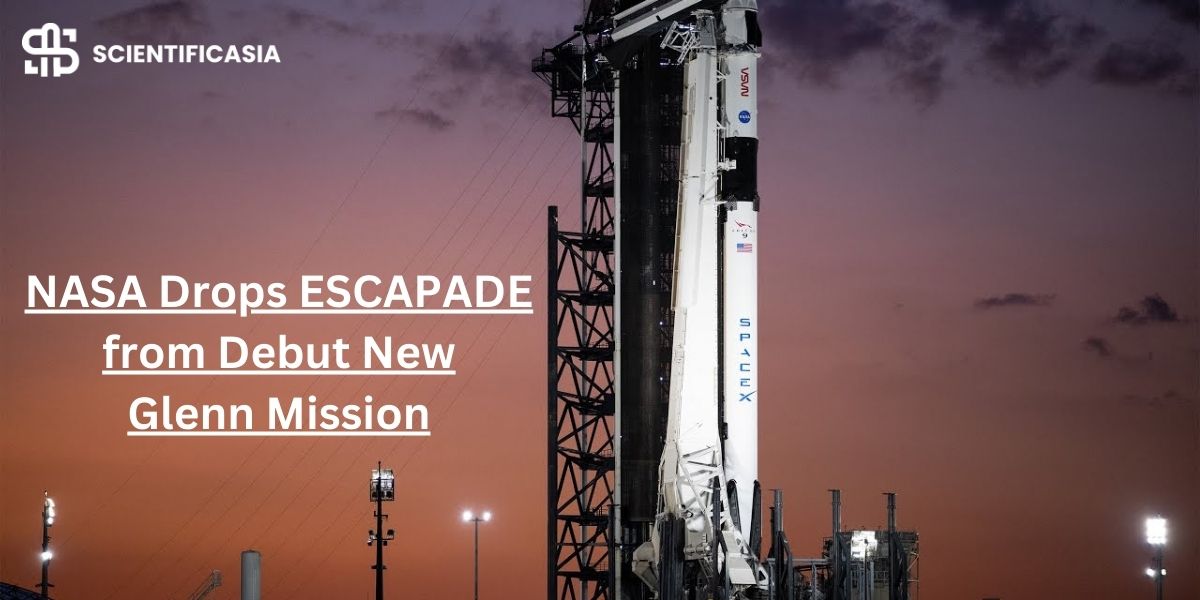WASHINGTON – Concerned that the rocket might not be ready in time, NASA decided not to launch two Mars-bound smallsats on Blue Origin’s first flight of New Glenn in October. NASA announced on September 6 that it will suspend pre-launch preparations for the twin Escape and Plasma Acceleration and Dynamics Explorers (ESCAPADE) smallsats, which were supposed to launch on October 13 and 21 from Cape Canaveral, Florida.
The government decided against equipping the spacecraft with hydrazine and nitrogen tetroxide propellants until more than one month before the launch window opens. NASA had determined that it was unable to delay the spacecraft’s fueling, and as a result, it was imperative to make a decision immediately on New Glenn’s readiness for the October launch window.
“In the event of a launch delay, which could be caused by several factors, the decision was made to avoid significant cost, schedule, and technical challenges associated with potentially removing fuel from the spacecraft,” NASA said.
According to a person in the industry who was aware of the decision, Blue Origin thought New Glenn would be prepared for launch within the nine-day window in mid-October, even though the company still needs to finish testing and connect the rocket. Since maiden launches of new rockets are sometimes fraught with problems, that timeframe demanded that those last preparations proceed almost exactly as planned.
When it came to fueling the spacecraft, NASA wanted extra leeway in the timeline because of the challenges in removing the propellants if New Glenn missed the October window.
Bradley Smith, the director of NASA Headquarters’ Launch Services Office, said in a statement, “This is an important mission for NASA, and we must have sufficient margin in our prelaunch work to ensure we are ready to fly a tight planetary window.”
NASA stated that the spring of 2025 would be the next feasible launch date for ESCAPADE, which would take place aboard New Glenn. The agency withheld information about that alternate course, including the spacecraft’s estimated time of arrival at Mars. Then, a launch would take place outside of the customary Mars launch window, which opens this fall and closes for around two years.
Despite the delay, agency officials insisted they still intended to launch ESCAPADE, a low-cost mission to investigate the Martian magnetosphere’s interaction with the solar wind. NASA Assistant Administrator for Science Nicky Fox stated in a statement, “We’re committed to seeing ESCAPADE safely into space, and I look forward to seeing it off the ground and on its trip to Mars.”
“We look forward to the flight and support NASA’s decision to target the ESCAPADE mission for no earlier than spring 2025,” a statement from Blue Origin stated.
The first flight of New Glenn, according to the corporation, would instead carry an undisclosed amount of technology for its Blue Origin orbital transfer vehicle. It will also be the vehicle’s first launch certified for the Space Force’s National Security Space Launch program. That was supposed to happen on the second trip out of New Glenn in December, but the business is pushing that launch date ahead to November. Blue Origin had not yet revealed the payload or launch date for that follow-up.
According to an industry insider, Blue Origin won’t be slowing down or drastically altering launch preparations other than making the necessary adjustments to account for the payload modification. This includes rolling out to the pad early next week, on September 3rd, to conduct a static-fire test of the top stage. The actual launch may take place in early November, in as little as a few weeks.
Discover More News:
U.Va. Health faculty ultimatum clear away of health system CEO, School of Medicine dean
SpaceX Set to Try Groundbreaking Booster Catch in Upcoming Starship Mission
















